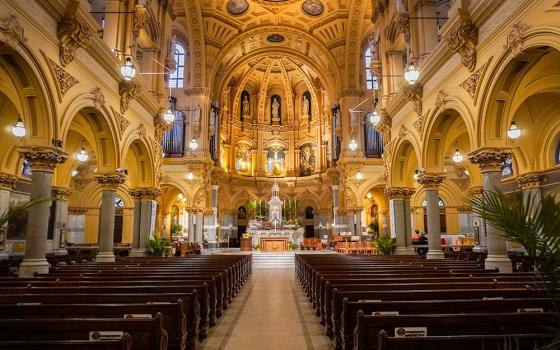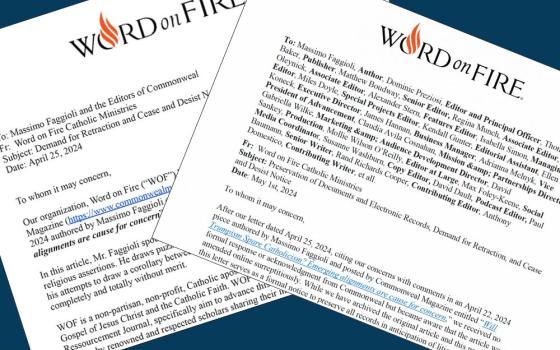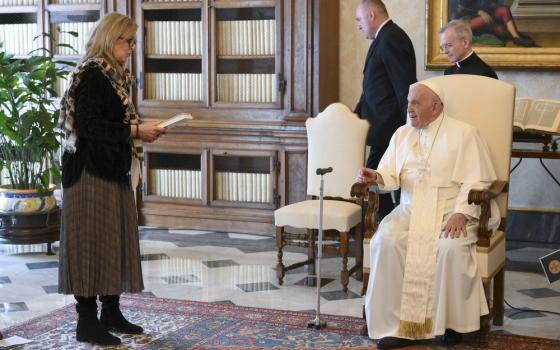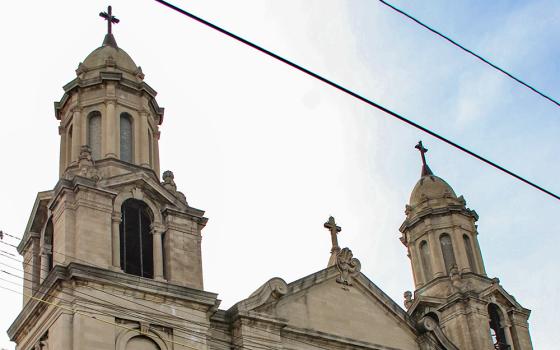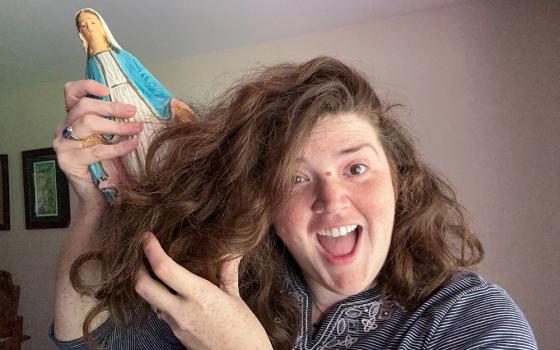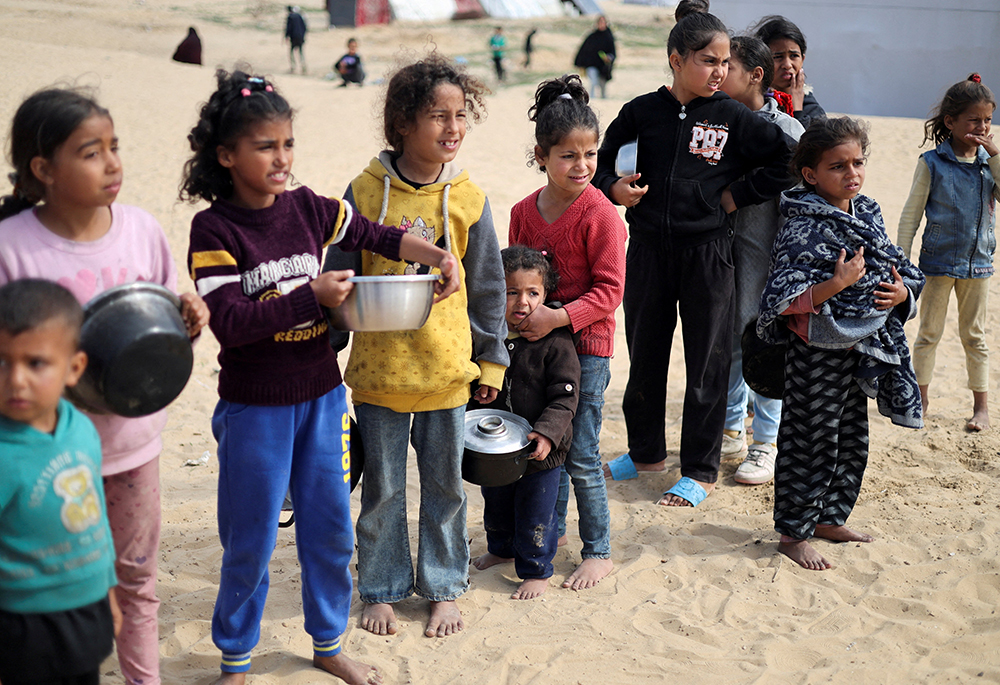
Displaced Palestinian children wait to receive free food at a tent camp, amid food shortages, as the conflict between Israel and Hamas continues, in Rafah in the southern Gaza Strip, Feb. 27. If Israel invades Rafah, the nearly 1 million displaced Palestinians there will have few or no safe places to go, a Catholic Relief Services official told NCR. (OSV News/Reuters/Ibraheem Abu Mustafa)
If Israel launches a ground invasion in Rafah, as Prime Minister Benjamin Netanyahu vowed this week, the nearly 1 million displaced Palestinians there will have few or no safe places to go, said a Catholic Relief Services official who recently visited the southern Gazan city.
"The logistics associated with moving that many people is just massive," said Jason Knapp, CRS' country representative in Jerusalem, West Bank and Gaza. He spoke to NCR from Jerusalem after returning from a six-day trip to Gaza that included a stop in Rafah on Monday (April 29).
"People say, 'I don't know where I can go, where it's going to be safe,' " Knapp said. "That is the biggest concern on everybody's mind."
Knapp said he is fearful not only about the loss of life, but also that a ground invasion would affect the movement of humanitarian workers and aid. "We don't know what supply lines will remain open," he said. "That's an important discussion that still needs to happen."
Although U.S. administration officials have been pressing Israel to avoid a major assault on Rafah to minimize Palestinian casualties, Netanyahu threatened Tuesday (April 30) to go forward with the long-planned attack, even amid cease-fire negotiations.
United Nations chief Antonio Guterres urged Israel not to proceed with the military assault, saying it would "be an unbearable escalation, killing thousands more civilians and forcing hundreds of thousands to flee."
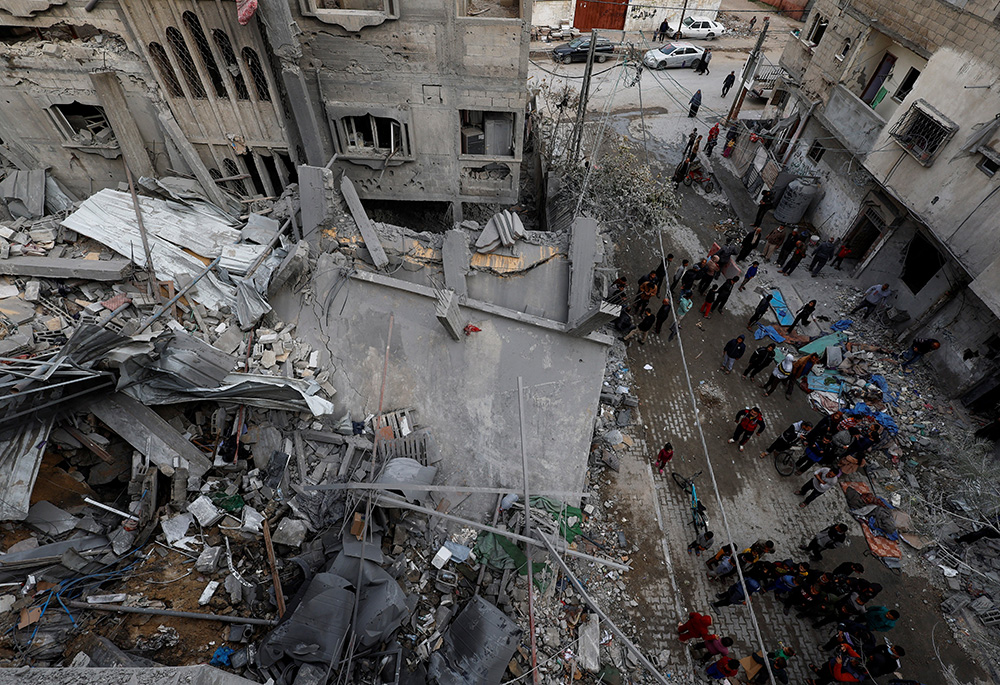
Palestinians inspect the site of an Israeli airstrike on a house, amid the ongoing conflict between Israel and the Palestinian Islamist group Hamas, March 24 in Rafah, in the southern Gaza Strip. (OSV News/Reuters/Mohammed Salem)
During his visit to Rafah, Knapp said he was struck by the stench of the open sanitation there and the difficulty people have in day-to-day coping during regular airstrikes. One CRS staff member in Rafah said a bomb hit a building just 30 meters away. The staffer told Knapp: "It's so much harder when you know the kids who are killed in the building right across the street."
Catholic Relief Services has about 50 Palestinian staff members in Gaza and a network of about 150-175 partner staff there, Knapp said. Although no full-time CRS staff members have died in the conflict, longtime contract photographer Mohamed Reefi was killed in Gaza City in March while waiting for food aid to arrive.
"Every Gazan colleague has had someone in their network killed, often relatives," Knapp said. "Many staff have had immediate family members killed, either children or a parent."
The New York Times has reported that some Palestinians in Rafah have been moving north in anticipation of an Israeli ground offensive. But Knapp said in Khan Yunis, which is about 5 miles north of Rafah, he witnessed "staggering" levels of destruction.
"You see areas that were totally leveled," he said. "The hospital that we used to support during COVID days is entirely burned out, every single floor."
In the northern half of Gaza, where the United Nations estimates about 300,000 Palestinians remain, conditions are dire, Knapp said. "We are very concerned about hunger in Gaza … and by far the biggest concern is in the north," he said.
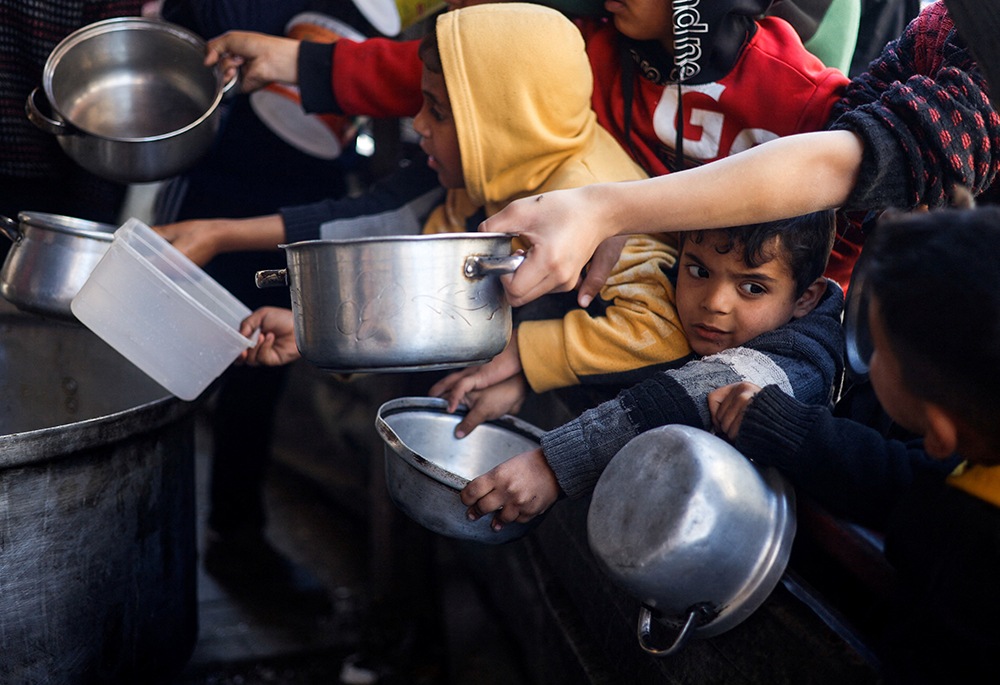
Displaced Palestinian children wait to receive food March 5 in Rafah, in the southern Gaza Strip, that was cooked by a charity kitchen amid shortages of food supplies as the ongoing conflict between Israel and the Palestinian Islamist group Hamas continues. (OSV News/Reuters/Mohammed Salem)
Although some U.N. aid convoys have reached the north, Catholic Relief Services is not currently working there. "We're hoping soon we'll be able to send assistance to our partner organizations in the north," Knapp said. "It's still a very complex environment in the north, and security is still a big concern."
The war began after the Oct. 7 Hamas-led raid into southern Israel in which at least 1,139 people, mostly civilians, were killed and about another 250 Israelis were taken hostage. Israel's now seven-month war against Hamas has killed more than 34,000 people, according to Palestinian health authorities, and has driven approximately 80% of Gaza's 2.3 million population from their homes.
Since the beginning of the war, Catholic Relief Services has served three-quarters of a million people in Gaza, with much of the aid focused on food and cash for urgent daily needs. "Our strategy is to be responsive to whatever the emerging needs are," said Knapp.
In the first months, Catholic Relief Services provided cash so families could buy things that were most urgent. "But as the local market became more constrained, we shifted to providing the actual items," he said.
That includes food kits, tarps and other materials for shelter, hygiene items and water purification kits. During his visit, Knapp toured a new CRS warehouse and distribution points in Gaza.
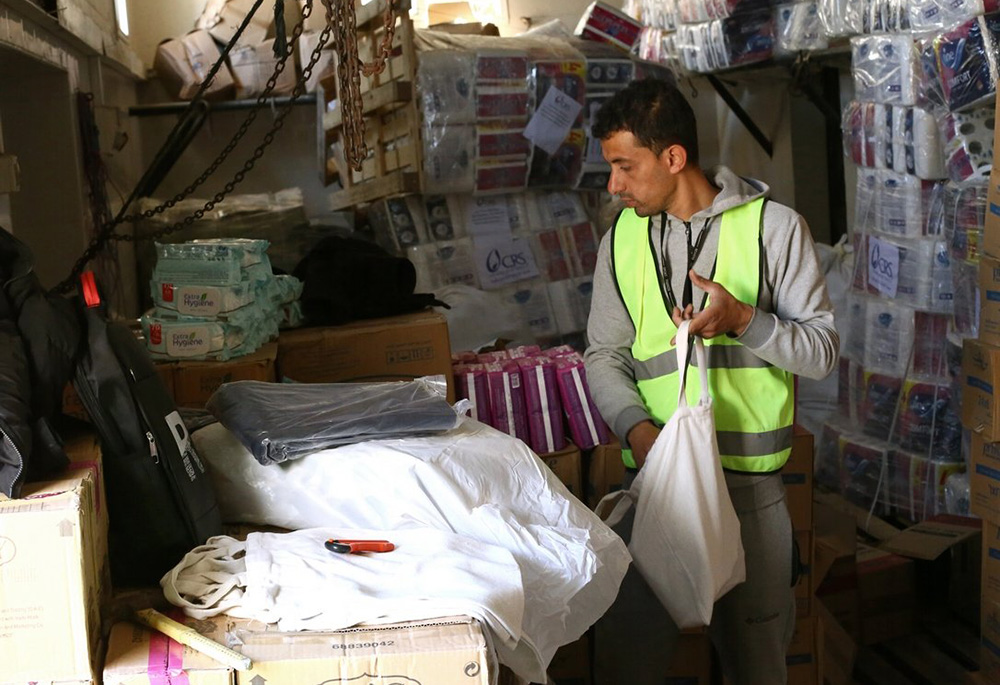
A humanitarian aid worker packs Catholic Relief Services relief supplies in Rafah, in the southern Gaza Strip, for distribution to people displaced in war-torn Gaza. (OSV News/Mohammad Al Hout for CRS)
Along with its partners on the ground, Catholic Relief Services also is offering psychosocial support to displaced Palestinians. "We are especially trying to help adolescents and their caregivers to have coping skills they need to have to be emotionally resilient in a context like this."
Eventually, Catholic Relief Services hopes to provide assistance for Palestinians to rebuild their lives, although Knapp admits that is still a distant reality. Aid that provides for a "dignified livelihood" would allow Palestinians to provide for themselves. For example, electronic vouchers could support shops once they reopen.
"But in the meantime, it's about keeping people alive, with shelter and food," he said.
Advertisement
Knapp said the people in Gaza appreciate the solidarity of Catholics around the world and he praised Catholic Relief Services donors who have stepped up for "the huge resource need with a crisis of this scale."
He also praised Pope Francis and the U.S. bishops for their "clear message that this needs to end."
A prophetic voice based on Catholic social teaching, which can cut through the political narratives, is key, he said.
"When I talk to my colleagues on the ground, they say, 'Just make the bombs stop.' "





